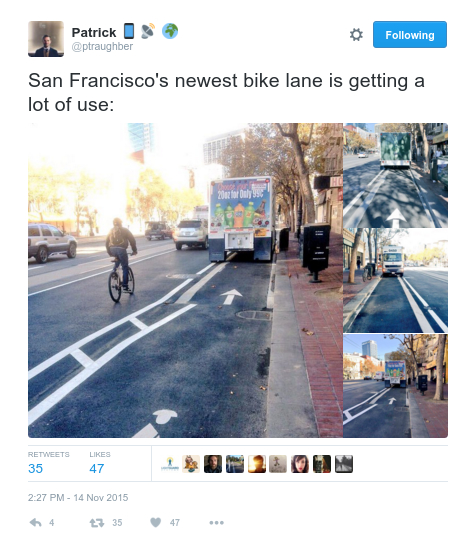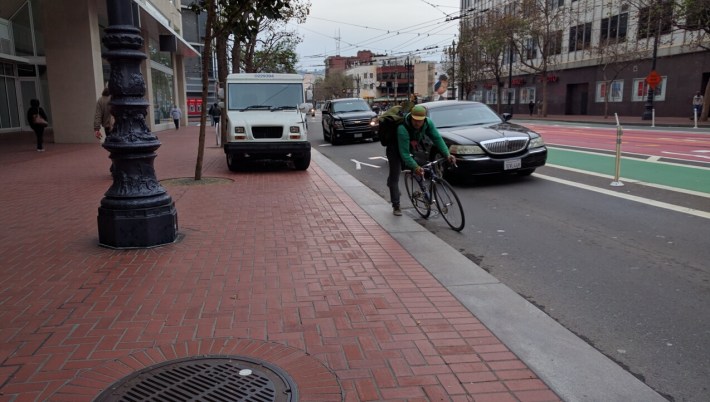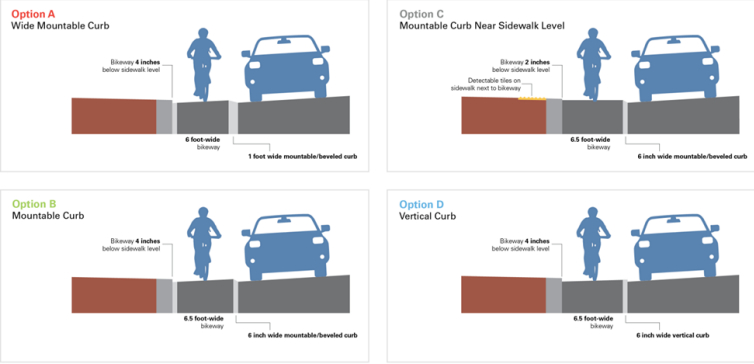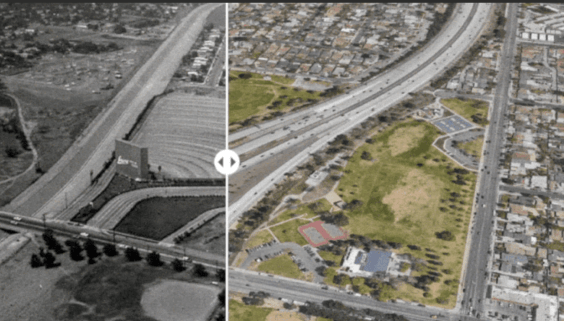Late last week, the San Francisco Municipal Transportation agency announced the results of a survey on its "Raised Bikeway Demonstration Project" on Market Street. From the SFMTA release:
Here are the four slightly different designs we tested (illustrated above):
A. Wide mountable curbB. Mountable curbC. Mountable curb near sidewalk levelD. Vertical curb
Based on survey results, SFMTA staffers are recommending a combination of features, plus bollards or some other kind of protection.
As Streetsblog readers are probably aware, these experimental treatments are on an eastbound stretch of Market Street, from Gough to 12th. They installed the raised treatments in the Fall of 2015 and then did their survey and evaluations.
What are the conclusions?
On the SFMTA's blog it says that "Based on the evaluation, for busy commercial streets like Market we recommend a bikeway design that’s level with the sidewalk (similar to that in option C), has a vertical curb (as used in option D) and includes buffer areas between both the traffic lane and the sidewalk."
The survey also concludes that "Mountable curbs, which are angled so vehicles can roll up them if necessary, tend not to be effective deterrents to illegal parking in commercial areas."
SFMTA had to do a study and an experiment to figure out that a two-inch elevation with a mountable curb wouldn't deter cars from parking on the bike lane?
SFMTA later installed safe hit posts on parts of the area as well. That's great. But one has to wonder why safe hit posts, planters, or some kind of physical protection wasn't the first thing installed--rather than the last.
To quote the guerrilla safety group SFMTrA, "Even though best practice abroad calls for raised bike lanes to be level with the sidewalk, all of SFMTA's test sections were designed to be mounted by vehicles. SFMTA claims this is so that para-transit vehicles can park in the bike lane to unload passengers on the sidewalk. But with a sidewalk level with the bike lane, paratransit vehicles could unload directly onto the bike lane."
SFMTrA goes on to complain that "MTA spent an entire year to replace the Market St. Raised Bikeway with something functionally equivalent to what was originally there. Mountable raised bike lanes are not protected bike lanes."

Indeed, Streetsblog has also criticized the "raised" bike lane strategy in past posts.
That said, given this is San Francisco, we're not sure even a sidewalk-height raised bike lane with a 90-degree curb is going to be enough. Remember, this is the city where cars and trucks park on the sidewalk with impunity. See exhibit A:

That photograph suggests another, longer-term fix, however. More on that in a future post.
Meanwhile, SFMTrA is right--if the treatment doesn't physically prevent cars from driving and parking on the bike lane, then it's not a protected bike lane, and it should be a non-starter. Even safe-hit posts should be viewed as a temporary fix. Unfortunately, SFMTA is moving forward with designs for raised bike lanes on places such as Masonic with two-inch raised bike lanes but no physical protection.
Let's hope now that SFMTA has studied the problem, some imaginative re-designs will come to Masonic and other streetscape projects before shovels start turning.






